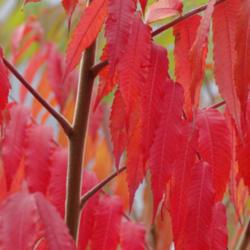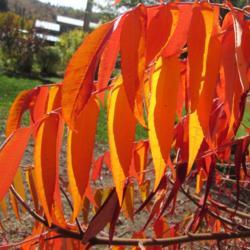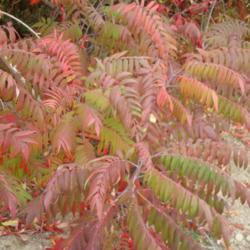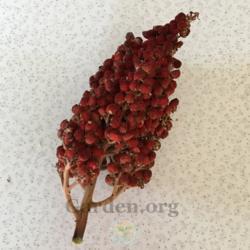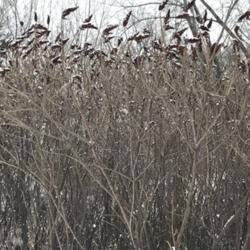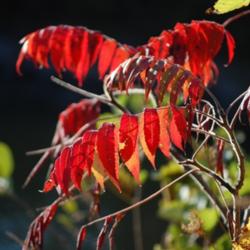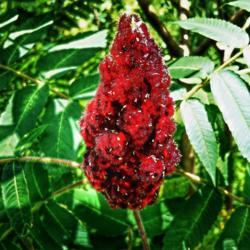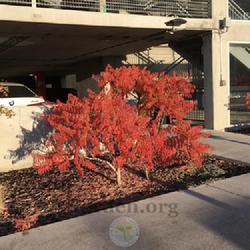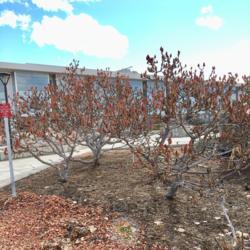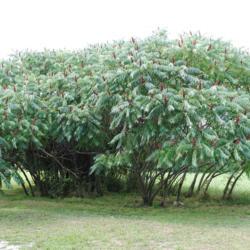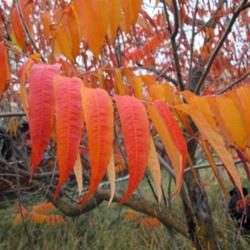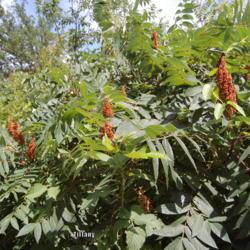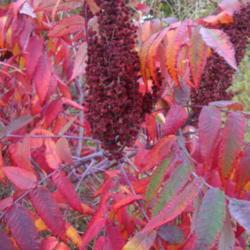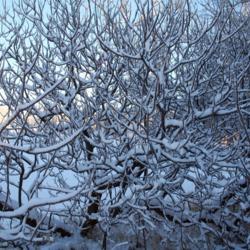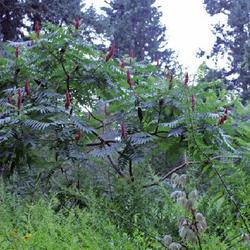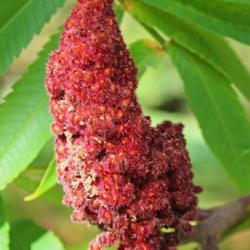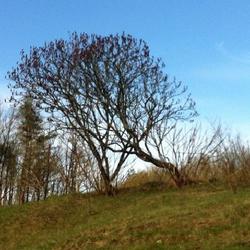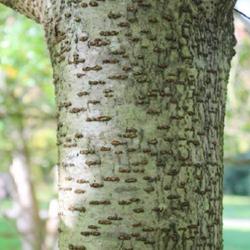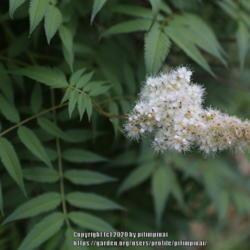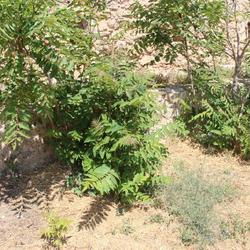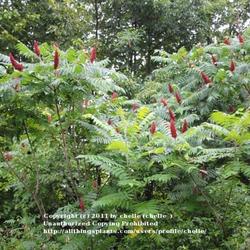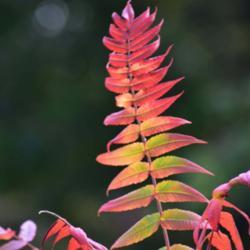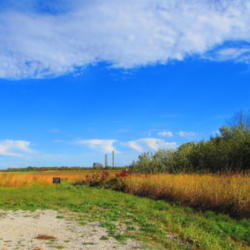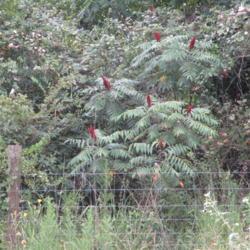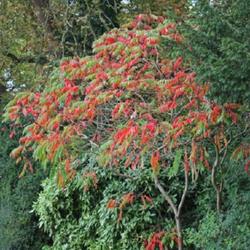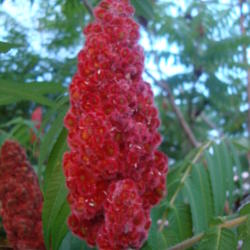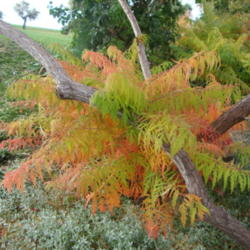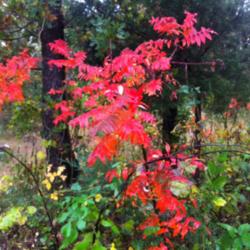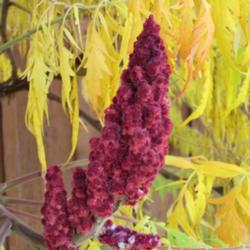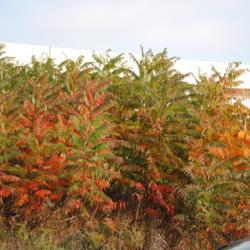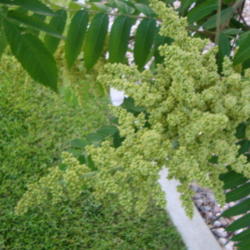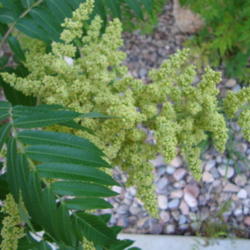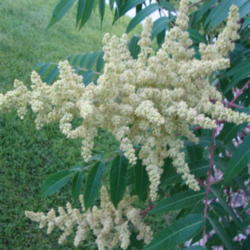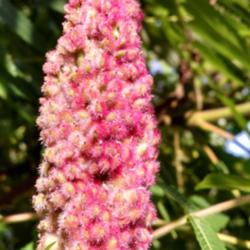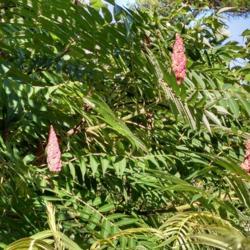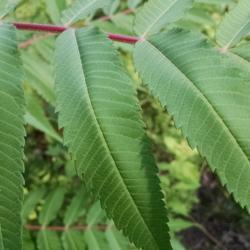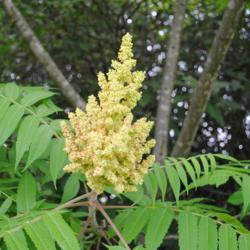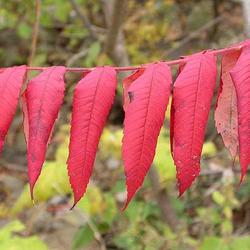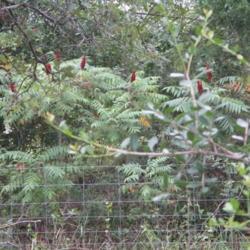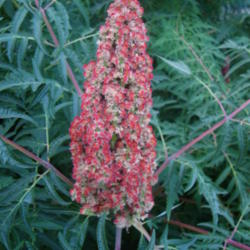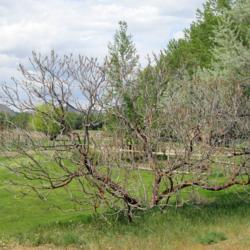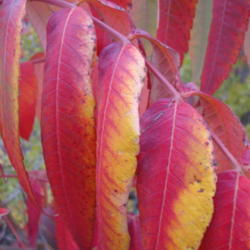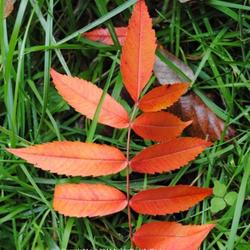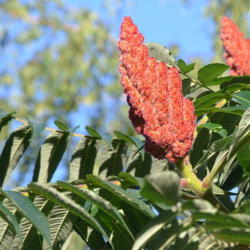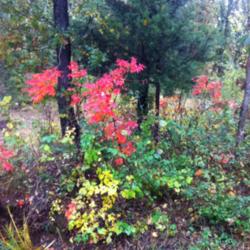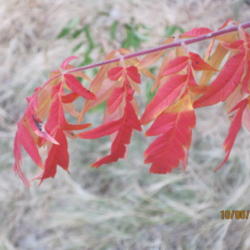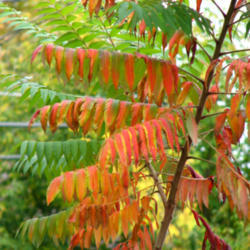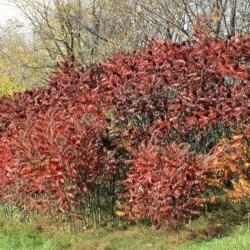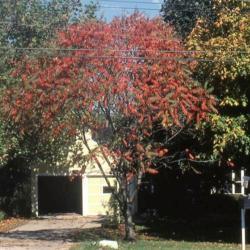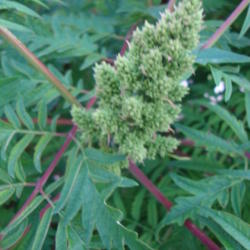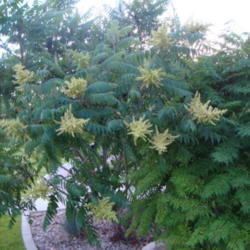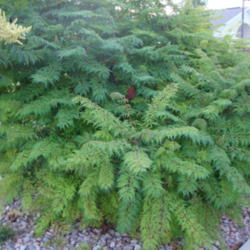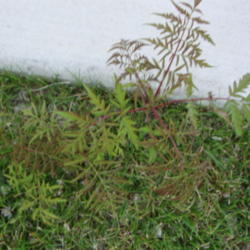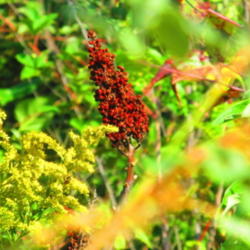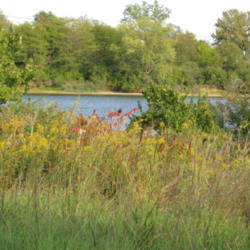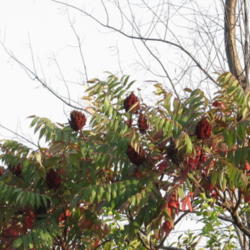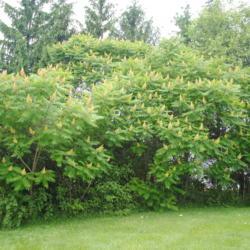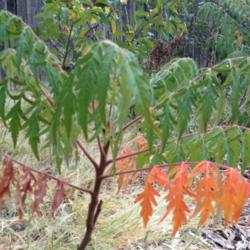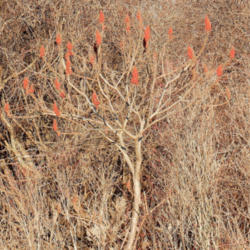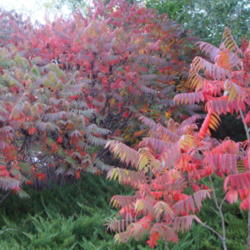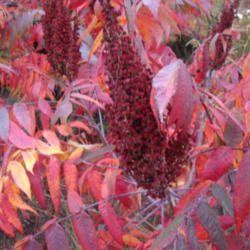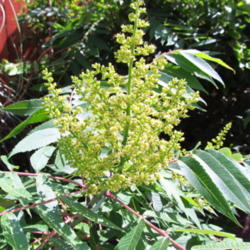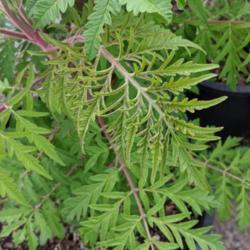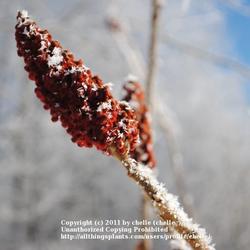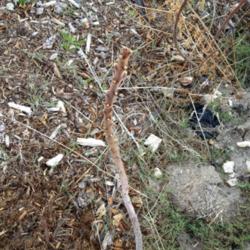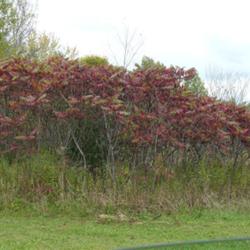Posted by
ILPARW (southeast Pennsylvania - Zone 6b) on Jan 5, 2018 12:15 PM concerning plant:
Staghorn Sumac is a common species in upland locations, especially liking hills and slopes, as along railroad tracks in the wild from Nova Scotia and southeast Canada, New England, all New York & Pennsylvania down the Appalachians to north Georgia, all Ohio, Michigan, & Wisconsin, northern Indiana & Illinois, and eastern Minnesota. It is one of those woody plants that is in between a large shrub and a small tree, usually about 15 to 20 feet high, especially in landscapes, though a few in happy wild locations have been known to get over 50 feet high that I have never seen. It is fast growing of about 3 feet/year when young. Old wood grows slowly and shoots can come up 7 feet/year from the shallow, widespreading root system that ground suckers to form a colony. The colony will eventually stop spreading, especially in landscape situations. It has very stout, dark velvety hairy twigs. The compound leaves are 1 to 2 feet long with 11 to 31 sharply toothed leaflets that turn a fantastic red or orange color in autumn. The female plants bear the large, terminal, velvety spikes of red berries that are loved by many birds and small mammals and which are mature from July through winter. It is grown by some large, diverse nurseries and many native plant nurseries. Very few average homeowners plant it, but landscape designers and architects sometimes love to use it in professional landscapes and in public sites.
Posted by
threegardeners (Brockville, Ontario, Canada - Zone 5a) on Sep 30, 2011 3:51 PM concerning plant:
I make a "tea" with the "fruits" of this Sumac.
Pour boiling water over the red berry clusters. Let sit for 10 minutes then strain (the boiling water kills any bugs/worms).
You can also put the berry clusters in a pitcher, fill with cold water and steep for a few hours like you'd make ice tea.
Very fruity tasting, kind of like a mild cranberry lemonade.
Chock full of vitamin C.
If your Sumac has white berries DO NOT TRY THIS!!
Posted by
betsyhowe on Dec 31, 2013 6:43 PM concerning plant:
As kids in Tennessee we used to pick the ripe berry clusters of the sumac and make tea which was very sour but with lots of sweetener tasted terrific. Is this something considered dangerous? It was supposed to have very high levels of vitaminC and nobody ever got sick. The tea was a lovely pink color like pink lemonade. The berry clusters were kept in paper bags and didn't spoil but did tend to fall apart as they dried, We had sumac tea all winter for colds and loved it. Anyone else familar with sumac tea?
Posted by
mellielong (Lutz, Florida - Zone 9b) on Apr 23, 2015 11:35 AM concerning plant:
The book "How to Know the Wildflowers" (1922) by Mrs. William Starr Dana says this is a common sumac which "illuminates our hills-sides every autumn with masses of flame-like color." She notes that this species has crimson fruit plumes whereas the poison sumac has white fruits. She supposes most people assume the common name of Staghorn Sumac refers to the shape of the pryamidal fruit clusters. However, the author believes the name is based upon the forked branches that appear after the leaves fall off.
Posted by
Skiekitty (Denver Metro - Zone 5a) on Jan 23, 2012 9:11 PM concerning plant:
Very xeric, easy growing "tree" shrub plant. Can get kinda tall, but very spindly. However, will sucker like MAD!!!! They are sexually dimorphic. Only female trees produce the berries.
Posted by
JuneOntario (Rosemont, Ont. - Zone 4a) on Dec 31, 2013 9:51 PM concerning plant:
After touching the leaves and branches of this plant with my bare hands, I had a bad allergic reaction (I had red, painfully itchy skin from my scalp to my feet, my ears and tongue swelled up, I felt nauseated and passed out, and I had a severely upset stomach for several days). Wear gloves when pruning branches, pulling suckers, or collecting-up the leaves of this plant!
